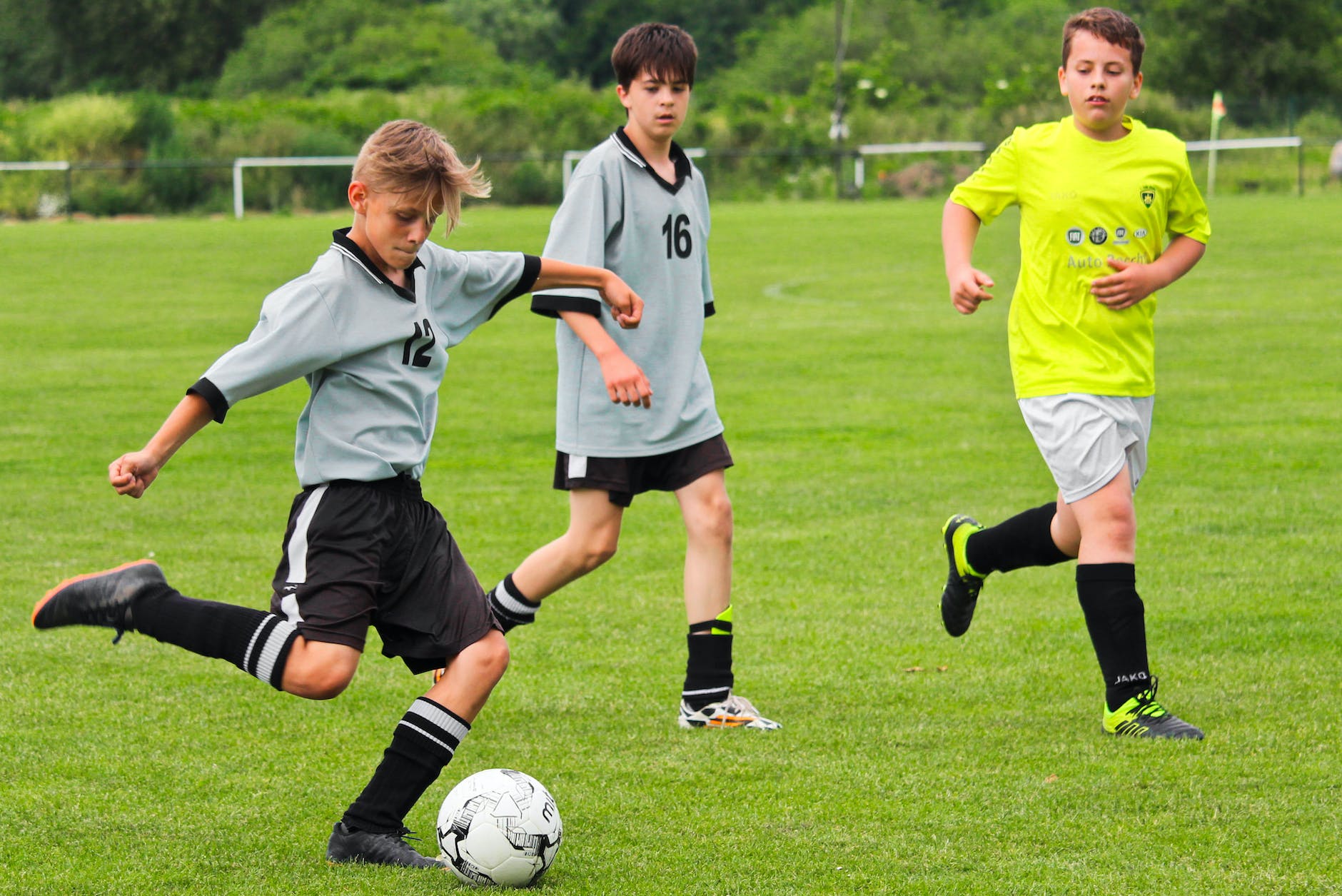Table of Contents
Football is a dynamic and sometimes complex sport that requires players to be versatile, adaptable, and knowledgeable. It is a game that requires a great deal of athleticism, skill, and strategy. , It is not only a physically demanding sport but also mentally challenging. One of the ways to develop these skills is by playing multiple positions.
Whether you are a coach, a volunteer parent, or a player, understanding the benefits of your players playing different positions can help you improve your team and contribute more effectively to your team’s success.
For youth teams, playing several roles is even more crucial. Exposing young players to different positions can help them identify their strengths and shortcomings, gain a wider perspective on the game, and enhance their general game understanding because they are still honing their abilities and awareness of the different scenarios of the game.
Additionally, switching between positions can keep players from being prematurely pigeonholed into one position, which could hinder their growth and future opportunities.

The Importance of Playing Multiple Positions in Youth Football Teams
The growth of young players’ abilities, physical fitness, and tactical awareness of the game is greatly aided by youth football teams. Practice at numerous positions is one facet of football that young players can really benefit from. It’s the coach who must ensure that his players will have the opportunity to experience the feeling of playing in different positions.
Playing a variety of positions can benefit players in a number of ways, including increasing adaptability, tactical awareness, and overall game comprehension. The significance of practicing numerous positions on youth football teams will be covered in this article. Above all, the young players will gain experience that will help them to adapt to different styles of play.
You want to develop your player’s tactical awareness? Check the book below from Soccer Tutor “Scanning – How to Train it and Develop Game Awareness“

Developing Adaptability:
To play various positions is essential for young players to become more adaptable on the field. As they learn to play different positions, they become more comfortable and confident in their abilities to adjust to different roles, demands, and challenges.
This adaptability can help players to be more effective and versatile on the field during a game. This can benefit their team in various ways.
Moreover, developing adaptability can help young players prepare for future challenges and opportunities in soccer. As they progress in their football careers, they may encounter situations where they need to play different positions due to injuries, tactical changes, or team needs.
By playing multiple positions from a very young age, players can develop the skills and mindset needed to thrive in such situations.
Enhancing Tactical Awareness:
Playing a number of different positions is one approach for young players to develop their tactical awareness. They will have a deeper knowledge of how each position interacts with the others and how they can impact the team’s overall strategy as they practice playing various positions.
The benefit would be for young players to become more positionally adaptable and have more thorough positional experience. They might contribute more to their squad and play better football because of their versatility.
Improving Overall Game Understanding:
Adopting a range of roles helps young players grasp the game better. They can learn to look at games from various angles, spot weaknesses in the opponents’ strategies, and employ their skills in a variety of ways that are advantageous to the team.
Additionally, enhancing general game understanding can assist them in making better choices on the field individually and collectively. They can develop the ability to react fast and effectively to changing circumstances, predict the movements of both their teammates and opponents, and modify their reactions as necessary.
In later sections of the article, I will explain in more detail.
Increased Versatility on the Field
In football, versatility is a useful quality. Players, in any position, can respond to shifting game scenarios, take on new roles and responsibilities, and even surprise the opposing team with unanticipated plays. Playing several positions is one approach to gain versatility on the field. We’ll talk about how playing various positions in football can develop versatility in this article.
Expanded Skillset:
Different positions require different physical and technical skills. A midfielder who learns to play as a fullback, for instance, can enhance his or her tackling, marking, and intercepting skills. Similar to how a striker who switches to the wing may enhance his or her crossing, dribbling, and returning to defense skills.
By developing these abilities, athletes can increase their adaptability and self-assurance on the field. They can take on new responsibilities and positions more easily and have a bigger impact on the team’s overall strategy.
Adaptability:
Players can become more versatile on the field by taking on several positions. In football, situations can change quickly, and players must be able to adapt to different scenarios effectively. Players can develop their flexibility and adaptability by learning to play a variety of positions.
One player who can adjust to various tactical scenarios is one who typically plays as a striker but also knows how to play as a winger. Depending on the demands of the team and the advantages and disadvantages of the opposition, they can swap between the two roles. This can offer the group an advantage and raise their chances of winning the match.
Tactical Awareness:
Playing numerous positions might help players become more tactically aware. Players can have a better knowledge of how the game functions overall by practicing different roles. They can learn how each position interacts with others, how to exploit their opponents’ weaknesses, and how to adapt to changing game situations.
Players who have this tactical awareness may be more skilled at making choices during games. They can anticipate the moves of both their teammates and their opponents, alter their approach when necessary, and react swiftly and skillfully to changing conditions.
Improved Team Performance:
Last but not least, switching between positions can improve the team’s performance as a whole. If a player can play a variety of positions effectively, they can fill in for injured or absent teammates, provide tactical options, and even surprise the opposing team with unexpected plays. This can significantly benefit the squad and raise their chances of winning the match.
Furthermore, juggling multiple roles among players can encourage cooperation and teamwork. Players are better able to cooperate, communicate more effectively, and aid one another in reaching their objectives when they are aware of one other’s roles and responsibilities.
Check the video below to find out examples of players who started playing in a different positions but while they were progressing in their career they ended playing and having success in a different position. This was possible because they were trained from a very early age to perform in different positions.
Check the video below to find out examples of players who started playing in a different positions but while they were progressing in their career they ended playing and having success in a different position. This was possible because they were trained from a very early age to perform in different positions.
How Playing Multiple Positions Improves Overall Game Understanding in Football
Tactics, positioning, decision-making, and communication are among the many complex ideas that must be well understood in order to play football. A strategy to achieve this understanding is to play several positions. We’ll speak about how playing various positions in football may aid players in completely comprehending the sport.
Expanded Viewpoint
A player’s perspective on the game can be expanded by playing several positions. Players can learn how their actions affect the game and how their position interacts with others by taking on various positions.
For instance, a player who typically plays as a striker may have a limited view of the game, concentrating on attacking and scoring goals. They can view the game from a different perspective and gain insight into how the team defends and attacks as a whole, though, if they also play as a midfielder or a defender. Players can make better decisions on the field and contribute more effectively to the team’s strategy with the aid of this widened perspective.
Improved Decision-Making:
The ability to make decisions can also be enhanced by playing numerous roles. Players can better grasp the effects of their actions and how they affect the success of the team by taking on various roles.
For example, a defender who also plays as a midfielder can switch behaviour and mentality from defense to attack more easily. Based on their tactical awareness and knowledge of the game, they can decide when to pass and when to drive with the ball more effectively.
The team’s performance as a whole and their chances of winning the game can both benefit from this enhanced decision-making.
One great way to train quick decision making is with Reaction Lights by adjusting them in gates and mannequins representing teammates giving support.

It’s a device that improves one’s reaction ability and coordinates eyes, hands, feet, and mind.
Empower body and mind through sound and flash reflex training, perfect for fitness and entertainment
Enhanced Communication:
The skill to play different positions can help players to better communicate with each other. Players can develop their ability to interact with their colleagues more effectively by taking on different roles within the squad.
For example, a player who mostly functions as a midfielder but can also play as a winger will be able to successfully communicate with their full-back. Based on their mutual understanding of one other’s duties and responsibilities, they can direct each other’s motions, offer assistance, and coordinate their actions. Through improved communication skills, teams can work together more effectively, make fewer mistakes, and perform better as a whole.
Better Teamwork:
Finally, switching between positions can help players work together more effectively. Players can collaborate more successfully, share knowledge, and aid one another in attaining their objectives by having a clear understanding of each other’s roles and responsibilities.
Moreover, havings multiple jobs to do on the pitch can also promote empathy and respect among players. Players can respect one another’s efforts and contributions and comprehend how challenging each other’s roles are. This can improve the team’s overall performance, establish a pleasant workplace culture, and boost team spirit.
Conclusion
In conclusion, playing multiple positions can bring numerous benefits to football players of all levels and ages. It can enhance players’ versatility, expand their knowledge, improve their decision-making and communication skills, and promote better teamwork. Also, the young players will learn to listen and execute special instructions that on many occasions, are not related to their main positions on the pitch.
Therefore, coaches and parents should encourage players to explore different positions and help them develop a diverse skillset that can benefit them in the long run. By doing so, they can help players become more well-rounded and effective on the field, and contribute to their overall growth and development both as athletes and as individuals.

